Sequoyah County Times
April 26, 2010
The question of whether or not an injection well to dispose of oil and gas well fluids will be opened in Vian remains on hold while an Oklahoma Corporation Commission referee considers the application and the protests against it.
The Vian well is in a semi-dormant status awaiting the referee’s decision, but the larger issues of new and wide-spread use of hydraulic fracturing techniques in gas wells and disposal of the waste water that results from them have grown.
Of immediate interest is the fact that four new injection wells have opened in Arkansas near Fort Smith. The Oklahoma Corporation Commission reports that the amount of waste saltwater coming from Arkansas into the 18 counties of commission District IV, which includes Sequoyah County, dropped from 925,566 barrels in the quarter ending Dec. 31, 2009 to 25,000 barrels for the quarter ending March 31, 2010. The new wells are likely taking much of the water that was coming here. However, this is but a small part of the total water injected in the district during the two time periods. Just because Arkansas drillers aren’t sending as much waste to us as they once did doesn’t mean the issue has passed.
I think it is important to consider as a whole the subjects of fractured wells, injection wells and soil farming, which is a way of attempting to dispose of waste salt water above ground and is the subject of much protest in Haskell County. Each is a part of the effort to increase production of natural gas.
When you see T. Boone Pickens on TV boosting gas, or read about rapidly increasing supplies of domestic natural gas, it is largely the hydraulically fractured wells that produce the gas.
I am indebted to my sister, Andy, in Beaumont, Texas, for sending along a story from the April 11 issue of the Houston Chronicle.
It reports on a potential disaster underway in the small town of Daisetta, Texas, which is located about 55 miles northeast of Houston.
On May 7, 2008, a sinkhole as wide as two football fields developed near this small town of 230. As that sinkhole developed, a quarter-mile away a geyser of fluid gushed from an abandoned well on property owned by the community’s mayor. The mayor said in the April 11 article that he had to cut down 100 trees on his property that were killed by the fluid.
The article went on to say, “In the first published report providing any explanation for the phenomenon, a Texas Commission on Environmental Quality adviser theorized injection disposal wells may be primarily responsible for destabilizing the area and creating a kind of quicksand 1,000 feet below that led to the collapse.”
The town has hired a law firm to investigate and sue the people responsible, if that can be determined.
In addition to the sinkhole and dead trees and vegetation, the city worries that its water wells may also become contaminated.
The article said the Texas Railroad Commission conducted investigations and found nothing in violation of its regulations other than an instance when an injection well operator injected more waste than his permit allowed. The Railroad Commission is the Texas equivalent of our Oklahoma Corporation Commission. Both regulate the oil and gas industry.
Injection well operators and regulators have said many times that there is little or no risk involved in injecting oil and gas well waste into underground formations. People in Daisetta aren’t convinced. The Chronicle article reported that “… an engineering company drilling a backup well for the city detected traces of toluene and naphthalene in its water sample…. the engineer recommended abandoning the $93,000 project and drilling somewhere else.”While hydraulic fracturing of oil wells has been going on for years, the wholesale fracturing of gas wells using millions of gallons of water under tremendous pressures is relatively new, and so some of the problems with the technique are also new.
Oklahoma is highly dependent on the oil and gas industry. One of the reasons we are in such a slump is the decline in prices for gas, partly brought on by the Great Recession. Partly because of this, state government is almost broke. Clearly, we all have a stake in what happens to oil and gas production.
We also have a huge stake in controlling and eliminating pollution and improving public safety. That is why people in Vian are so upset over the proposed injection well that would be located only a few blocks from the Vian school.
All of the problems surrounding frac wells have drawn the attention of the nation media. In recent weeks, the Wall Street Journal published an extensive article about the subject, the Public Broadcasting System program NOW featured a segment that would scare your pants off, and newspapers here and there are picking up on the story as it develops.
In the NOW segment, a man in a home near a fractured well turned on a water faucet in a kitchen and ignited the gas that came out into a ball of flames.
Congress has promised to hold hearings into the various issues surrounding the ever-growing complaints.
The oil and gas industry, and to some extent the government agencies which regulate them, are fond of saying that fracturing oil and gas wells and disposal of fluids down injection wells is nothing new.
It seems to me that while that may be true, there is still much more we don’t know about what we are doing than what we do know, and ignorance can be downright dangerous.
We should proceed with great caution.
LINK
Amen.
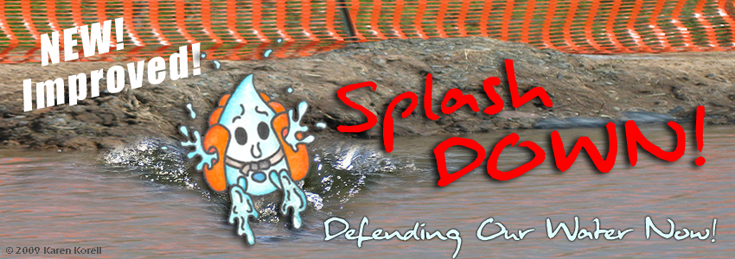



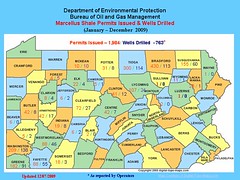

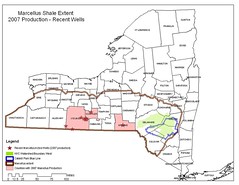

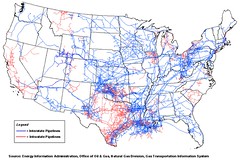
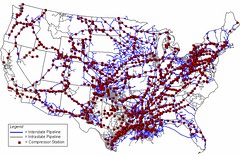









No comments:
Post a Comment